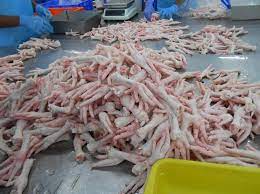Importing frozen chicken from a Brazilian supplier involves several steps and considerations, including identifying a reliable supplier, understanding import regulations, and ensuring proper logistics. Here’s a comprehensive guide to help you through the process:

### 1. Identifying a Reliable Supplier
– **Research**: Use online directories such as Alibaba, TradeIndia, and Global Sources to find Brazilian chicken suppliers.
– **Verification**: Check the supplier’s credentials, certifications (like ISO, HACCP), and export history.
– **Samples**: Request product samples to assess quality.
### 2. Understanding Import Regulations
– **Country-Specific Regulations**: Check the import regulations for frozen chicken in your country. This includes tariffs, quotas, and any sanitary and phytosanitary requirements.
– **Permits and Licenses**: Obtain necessary import permits and licenses from relevant authorities.
– **Health and Safety Standards**: Ensure that the supplier complies with health and safety standards required in your country. This often involves veterinary health certificates and inspections.
### 3. Contract Negotiation
– **Pricing**: Negotiate pricing terms including cost per kilogram, shipping costs, and payment terms.
– **Incoterms**: Define Incoterms (like FOB, CIF) to clarify responsibilities for shipping, insurance, and customs clearance.
– **Quality Assurance**: Include clauses for quality control, such as third-party inspections and penalties for non-compliance.
### 4. Logistics and Shipping
– **Freight Forwarder**: Hire a reputable freight forwarder experienced in handling frozen goods.
– **Cold Chain Management**: Ensure proper cold chain logistics to maintain the quality of frozen chicken during transport.
– **Customs Clearance**: Prepare necessary documentation for customs clearance including commercial invoice, packing list, bill of lading, and certificates of origin.
### 5. Storage and Distribution
– **Warehouse Facilities**: Ensure you have access to appropriate cold storage facilities.
– **Distribution Network**: Plan your distribution network to deliver the frozen chicken to retailers or end customers efficiently.
### 6. Compliance and Quality Control
– **Inspection**: Conduct regular inspections to ensure the quality of the imported chicken.
– **Traceability**: Maintain records for traceability in case of any quality issues or recalls.
1. **Research and Identify Supplier**: Verify credibility and request samples.
2. **Understand Regulations**: Obtain necessary permits and ensure compliance with health standards.
3. **Negotiate Contract**: Agree on pricing, payment terms, and responsibilities.
4. **Arrange Logistics**: Hire a freight forwarder, manage cold chain logistics, and prepare documentation.
5. **Ensure Storage and Distribution**: Use appropriate cold storage and plan distribution.
6. **Maintain Quality Control**: Conduct inspections and maintain traceability records.
By following these steps, you can effectively import frozen chicken from Brazil while ensuring compliance with regulations and maintaining the quality of your products.

